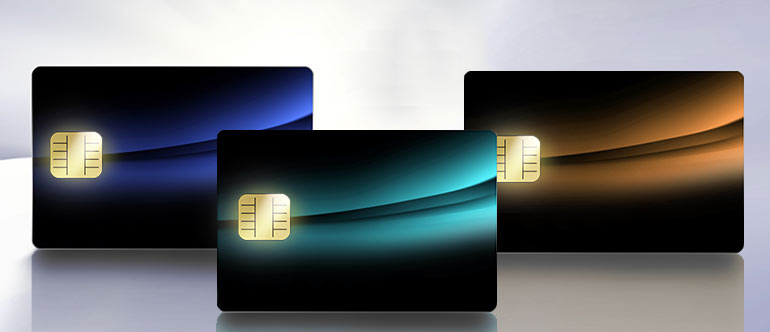Is Your Card Design Chip-Ready?


The small, square EMV chip has long been a standard for payment processing in Europe, Asia and many other parts of the world, but it has yet to take hold in the U.S. After several recent, and highly publicized, credit and debit card security breaches at retail chains, both industry and consumer advocates have renewed a push for chip adoption. Visa and MasterCard have even set a deadline of October 2015 for the conversion. Any issuer or merchant not using a chip system by then will be responsible for the cost of payment fraud.
This means that EMV chips are coming to U.S. cards. Based on recent estimate, 70 percent of credit cards will have a chip by the end of 2015. And this change is not just technological: it also impacts the card design. A client recently asked Media Logic to outline the design implications for adding the EMV chip to a card, and we’ve summarized some of the key points from that analysis here.
Chip placement
 The location of the EMV chip is an international standard for all cards. Like the magnetic stripe, its position is set specifically to allow card readers to work correctly all over the world. The placement of the chip on the center left of the card could have an impact on the layout, design and branding of a card product. Many cards will only need minor changes to their designs, but some will require significant redesigns to accommodate the chip.
The location of the EMV chip is an international standard for all cards. Like the magnetic stripe, its position is set specifically to allow card readers to work correctly all over the world. The placement of the chip on the center left of the card could have an impact on the layout, design and branding of a card product. Many cards will only need minor changes to their designs, but some will require significant redesigns to accommodate the chip.
Layout and spacing
- If your card uses a “billboard” approach (with an element, image or text that runs across the full width of the card), the chip location could interrupt your current card design.
- Any card that uses an image in the background may need to be updated to factor in how the chip looks in front of that photo.
- EMV chips will compete for space on the card, so there is less room for design elements.
- The overall “balance” of a card could be impacted. Traditionally, the area of the card above the numbers has been a blank canvas, but the chip changes that by taking up room on the center left.
- Vertical cards, while not widely used, are preferred by some issuers to create a different and unexpected look, but since the chip placement is the same for horizontal and vertical cards, it means that the chip will be in an awkward location on these products.
Prominence
- Issuers should consider if they want highlight or downplay the chip. By drawing attention to the chip, issuers can emphasize features, like global acceptance or added security.
- Conversely, if it’s likely to have limited use or appeal for a specific audience, the design of the card can divert attention from the chip.
- Chips are generally available in two colors – silver and gold – and which color to use should be a design consideration. Issuers need to think about which chip color is a better fit with the card brand and which aligns best with the color palette of the card design.
Card production
- The materials used for card manufacturing – from substrates that are used as the base layer to finishing coats like pearlescent that are added on top of the card – are also part of the overall card design.
- With the addition of the chip, the materials used should be reviewed with a card manufacturing partner to determine if any changes are required.
So what should you do first? Product and brand managers who oversee card design should first and foremost be aware of any plans or timelines for adding an EMV chip to a card. Once that is known, we’d recommend staying ahead of the process by proactively reviewing the card design and considering what (if any) impact the EMV chip will have.
For many issuers, the chip will just be another “standard” element on the card and will not require any changes to design. There could be some minor updates, such as a slight shift in the placement of a background element or image. But in some cases a significant overhaul will be required. No matter how it impacts your product, we recommend that issuers address chip conversion with their design agency and their card plastic manufacturer to discuss specific options for each card product.





